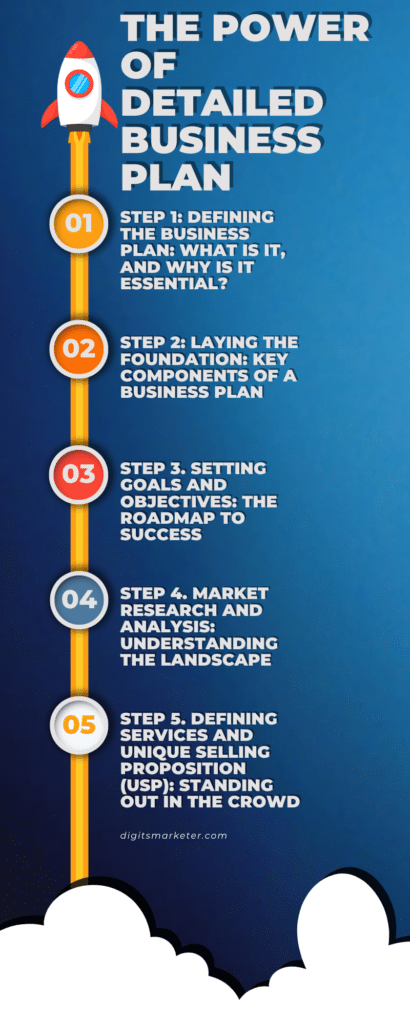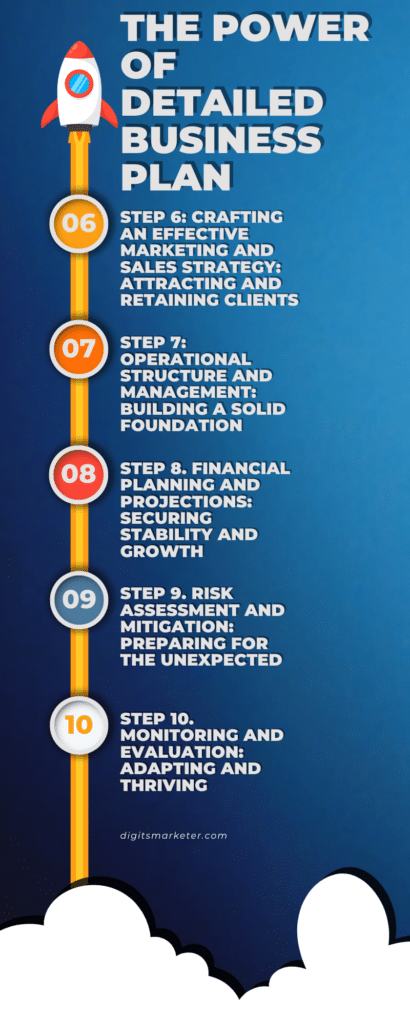It is very important to take advantage of the power of a detailed business plan. Starting a business can be an exhilarating endeavor, brimming with creative opportunities and the potential to make a significant impact in the industry.
However, embarking on this journey without a well-thought-out business plan is like sailing without a compass – it leaves you adrift, uncertain of your direction, and more susceptible to the challenges that lie ahead.
A detailed business plan is the cornerstone of every successful business, providing a roadmap to navigate through the complexities of entrepreneurship. In this post, we will delve into the compelling reasons why crafting a comprehensive business plan is crucial for your business’s growth and success.











Transforming businesses through innovative digital marketing strategies.
About Us
Case Studies
Careers
Contact
© 2025 Digits Marketer. All rights reserved.
WhatsApp us